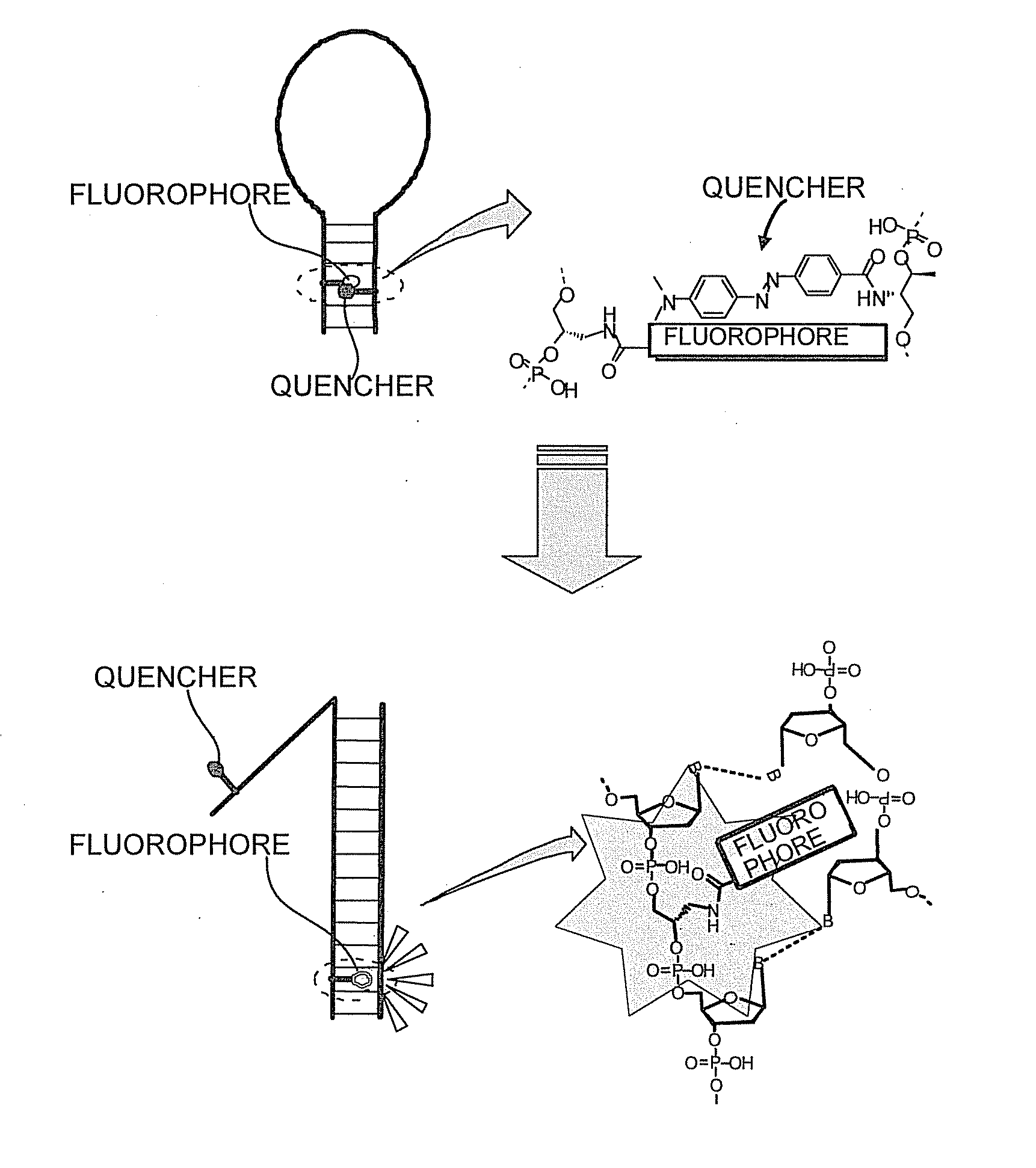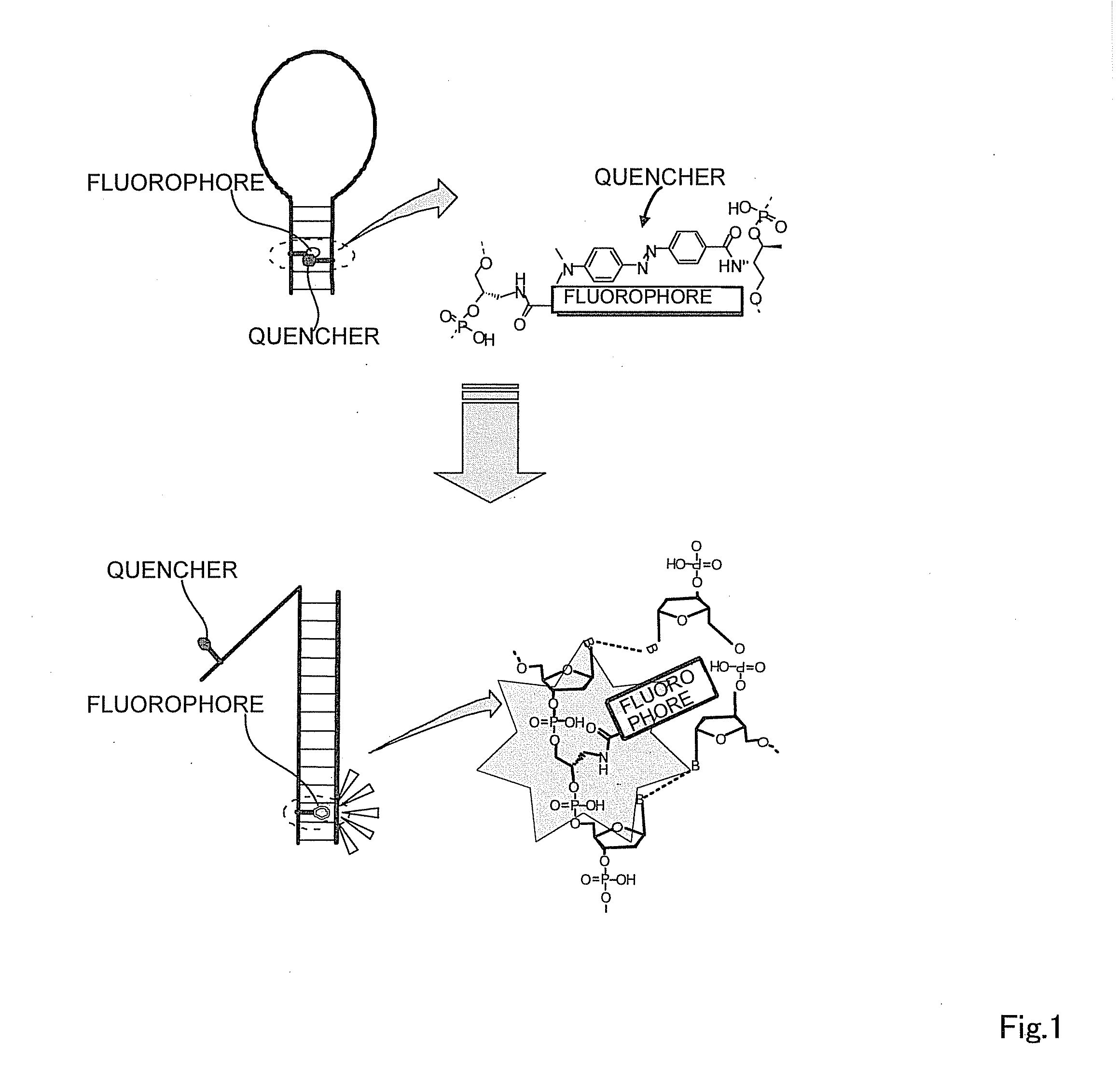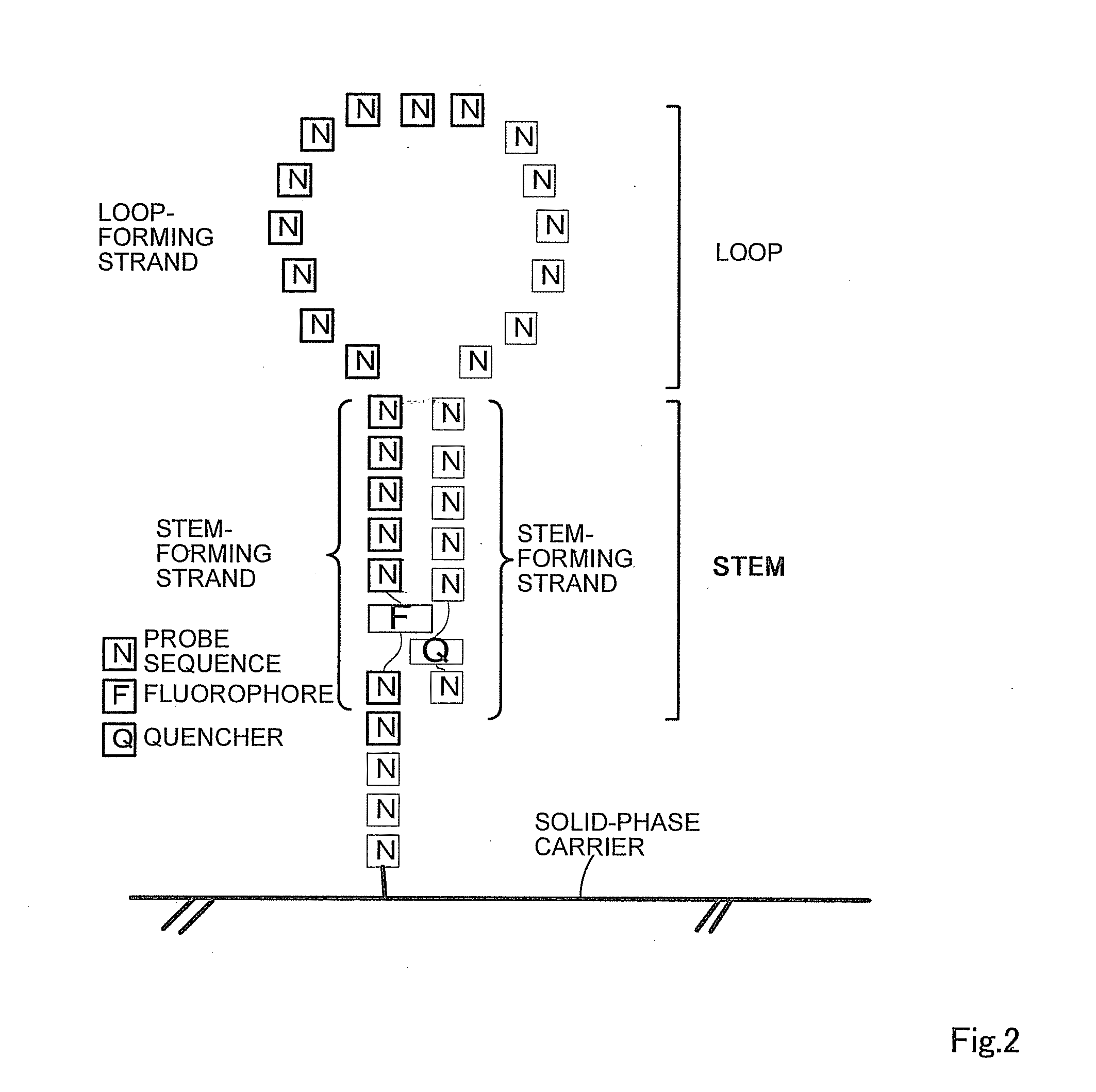Oligonucleotide probe and use thereof
a technology of oligonucleotide probes and probes, which is applied in the field of oligonucleotide probes, can solve the problems of reducing the design flexibility of probes, reducing the detection specificity of target nucleic acids, and greatly affecting the emission strength and interaction with the target nucleic acids, so as to achieve a wide range of application and design flexibility. , the effect of wide applicability
- Summary
- Abstract
- Description
- Claims
- Application Information
AI Technical Summary
Benefits of technology
Problems solved by technology
Method used
Image
Examples
example 1
Amidite Monomerization of D-Threoninol Protected with (allyloxy)carbonyl Group
[0072]In this example, the amidite monomer (Compound A) of a unit (C3) for linking the fluorophore or quencher was synthesized according to the following scheme. D-threoninol (0.99 g, 9.41 mmol) was dissolved in 75 ml of tetrahydrofuran (THF) in a 300 ml eggplant flask, and agitated after addition of 15 ml of triethylamine. Next, allyl chloroformate (1.01 ml, 9.51 mmol) previously dissolved in 75 ml of THF was dripped into the aforementioned THF solution in an ice bath. After 15 minutes the ice bath was removed and this was warmed to room temperature, agitation was continued, and the reaction was terminated 1 hour and 30 minutes after completion of THF solution dripping. The solvent was distilled away with an evaporator, and the remainder was purified by silica gel column chromatography (developing solvent chloroform:methanol=3:1) to obtain Compound 1-1.
[0073]The resulting Compound 1 (1.72 g, 9.09 mmol) wa...
example 2
Amidite Monomerization of 3-amino-1,2-propanediol Protected with (Allyloxy)Carbonyl Group
[0075]In this example, the amidite monomer (Compound B) of a unit (C2) for linking the fluorophore or quencher was synthesized by the following scheme.
[0076]3-amino-1,2-propanediol (1.0 g, 11 mmol) was dissolved in 30 ml of dimethylformamide (DMF) in a 200 ml eggplant flask, and agitated after addition of 15 ml of triethylamine. Allyl chloroformate (1.4 ml, 11 mmol) previously dissolved in 20 ml of DMF was then dripped in to the previous DMF solution in an ice bath. 15 minutes later the ice bath was removed, the solution was returned to room temperature, agitation was continued, and the reaction was terminated 2 hours after the completion of dripping of the DMF solution. The solvent was then distilled away with an evaporator, and the remainder was purified by silica gel column chromatography (developing solvent chloroform:methanol=3:1) to obtain Compound 1-3. Compound 1-4 and then Compound B wer...
example 3
Synthesis of Thiazole Orange (TO-1, TO-2)
[0078]In this example, thiazole orange derivatives were synthesized according to the following scheme as fluorophores.
[0079]2-(methylthio)benzothiazole (2.04 g, 11.3 mmol) was measured into a 200 ml eggplant flask and dissolved by addition of 5 ml of ethanol, and this solution was heated to reflux at 65° C. for 3 hours after addition of iodomethane (1.5 ml, 24.1 mmol). The resulting precipitate was collected by suction filtration to obtain Compound 2-1 (0.52 g).
[0080]Bromoacetic acid (1.94 g, 14.0 mmol) was then measured into a 200 ml eggplant flask, and dissolved by addition of 10 mL ethyl acetate. Lepidine (2 ml, 15.1 mmol) was then added, and agitated for 2 hours 30 minutes at room temperature. The resulting precipitate was collected by suction filtration to obtain Compound 2-2 (0.41 g). Bromobutyric acid (8.08 g, 52.8 mmol) was then measured into a 200 ml eggplant flask as above, and dissolved by addition of 10 ml ethyl acetate. Lepidine ...
PUM
| Property | Measurement | Unit |
|---|---|---|
| absorption wavelength | aaaaa | aaaaa |
| absorption wavelength | aaaaa | aaaaa |
| absorption wavelength | aaaaa | aaaaa |
Abstract
Description
Claims
Application Information
 Login to View More
Login to View More - R&D
- Intellectual Property
- Life Sciences
- Materials
- Tech Scout
- Unparalleled Data Quality
- Higher Quality Content
- 60% Fewer Hallucinations
Browse by: Latest US Patents, China's latest patents, Technical Efficacy Thesaurus, Application Domain, Technology Topic, Popular Technical Reports.
© 2025 PatSnap. All rights reserved.Legal|Privacy policy|Modern Slavery Act Transparency Statement|Sitemap|About US| Contact US: help@patsnap.com



